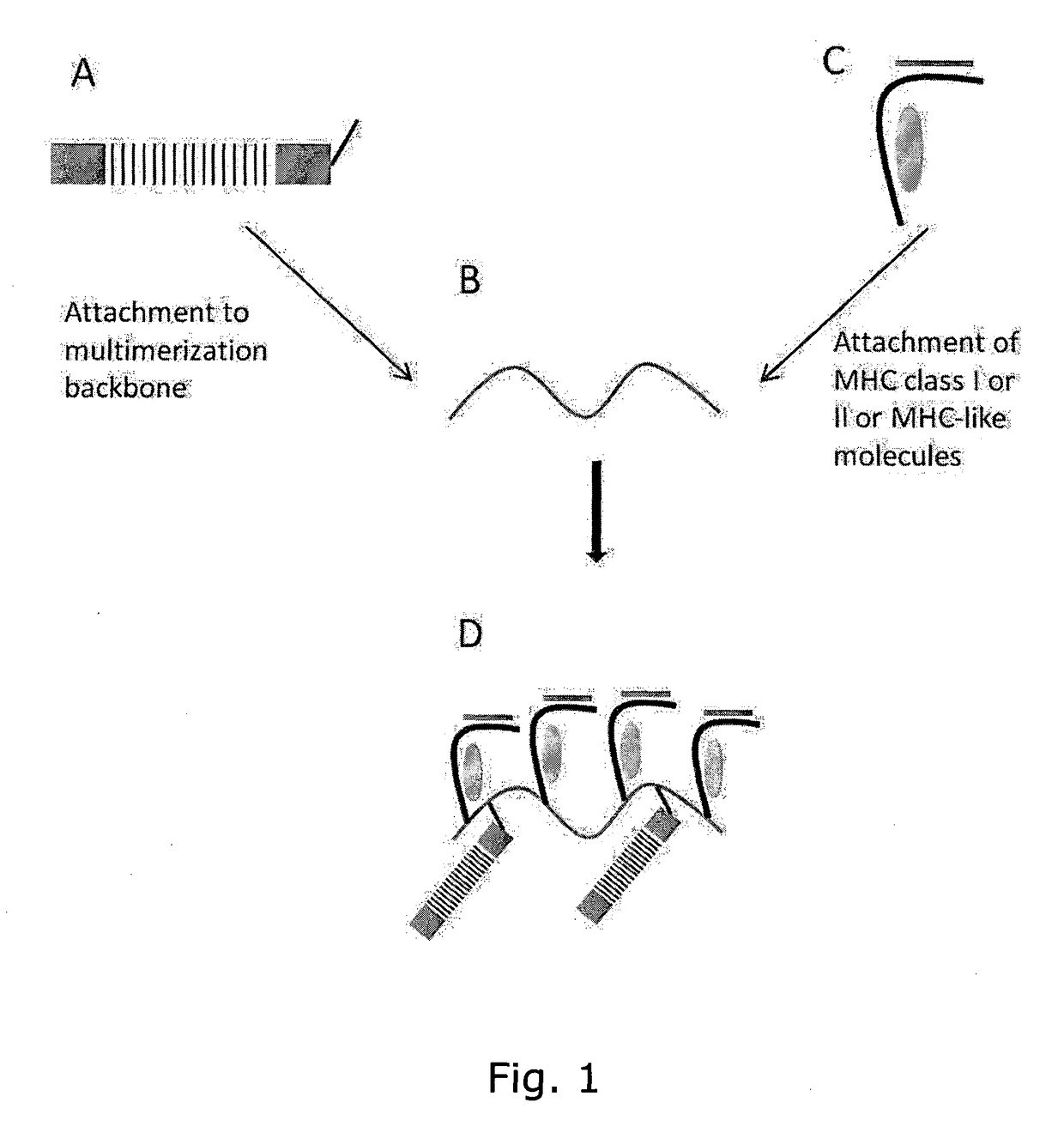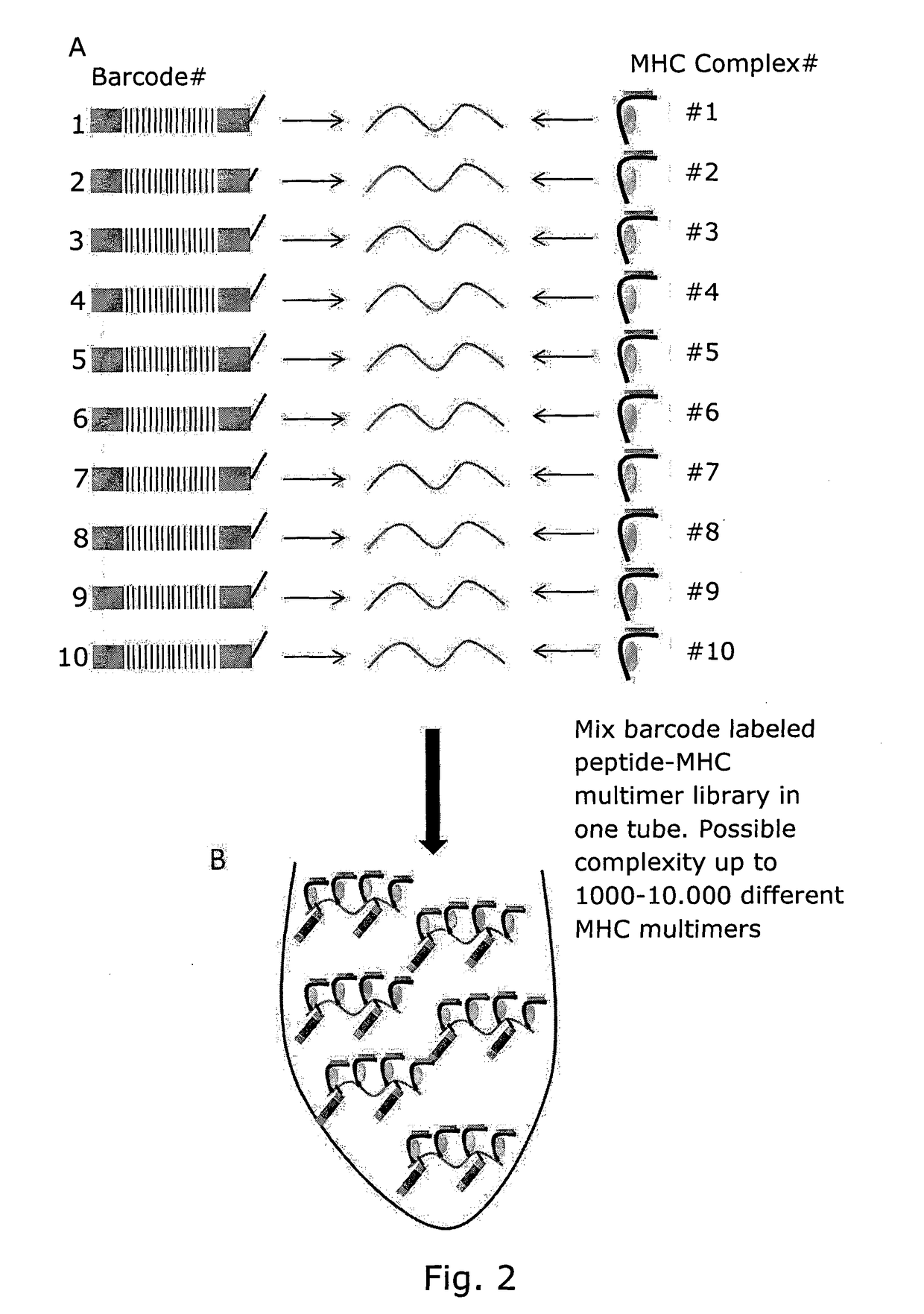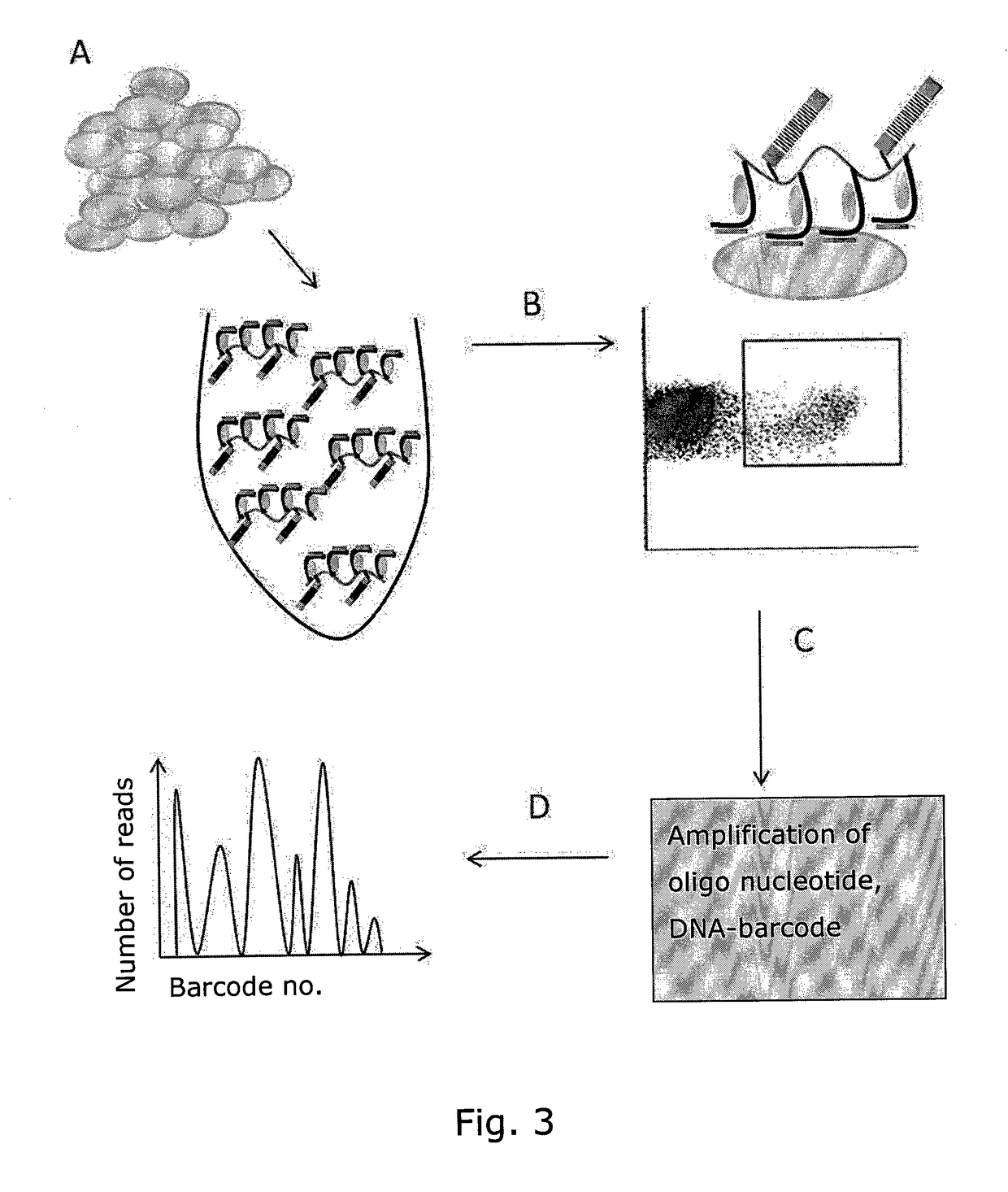Determining Antigen Recognition through Barcoding of MHC Multimers
a nucleic acid-labelled, antigen-based technology, applied in the direction of instruments, peptides, biochemistry apparatus and processes, etc., can solve the problem that determination is not possible with current mhc multimer-based technologies, and achieve the effect of expanding our understanding of t-cell recognition
- Summary
- Abstract
- Description
- Claims
- Application Information
AI Technical Summary
Benefits of technology
Problems solved by technology
Method used
Image
Examples
example 1
[0144]FIG. 5 shows results that act as proof-of-principle for the claimed invention. FIG. 5A, Flow cytometry data of peripheral blood mononuclear cells (PBMCs) from healthy donors.
[0145]Materials and Methods
[0146]PBMCs were stained with CMV specific peptide-MHC multimers coupled to a specific nucleotide-barcode. In addition to CMV peptide-MHC reagents the cells were stained in the presence of negative control reagents i.e. HIV-peptide MHC multimers coupled to another specific barcode label and the additional negative control peptide-MHC reagents (p*) not holding a barcode—all multimers were additionally labeled with a PE-fluorescence label. The amounts of MHC multimers used for staining of PBMCs were equivalent to the required amount for staining of 1000 different peptide-MHC specificities i.e. 1× oligo-labeled CMV specific MHC multimers, 1× oligo-labeled HIV specific MHC multimers and 998× non-labeled p*MHC multimers, so as to give an impression whether background staining will int...
example 2
[0161]This example relates to[0162]i) the stability of DNA oligonucleotides, used in one embodiment of the invention, in blood preparations, and[0163]ii) an embodiment of the invention, in which certain tagged Dextramers (detection molecules in which the binding molecule is a number of peptide-MHC complexes, and the label is a DNA oligonucleotide) are enriched for. Allowing identification of the Dextramers with binding specificity for certain (subpopulations of) cells in the cell sample tested. In i) it is shown that DNA oligos are stable during handling in PBMC's and in blood for a time that will allow staining, washing and isolation of T cells and subsequent amplification of DNA tags.
[0164]In ii) Show that a model system consisting of DNA-tagged Dextramers with MHC specificities for CMV, Flu and negative control peptide will locate to and can be captured / sorted with relevant T cell specificities and can be identified by PCR amplification and / or sequencing.
[0165]A. Stability of Sin...
example 3
[0231]This is an example where the Sample was blood from one CMV positive and HIV negative donor which was modified to generate Peripheral blood mononuclear cells (PBMCs). The Backbone was a dextran conjugate with streptavidin and fluorochrome (Dextramer backbone from Immudex).
[0232]The MHC molecules were peptide-MHC (pMHC) complexes displaying either CMV (positive antigen) or HIV (negative antigen) derived peptide-antigens. The MHC molecules were modified by biotinylation to provide a biotin capture-tag on the MHC molecule. The MHC molecule was purified by HPLC and quality controlled in terms of the formation of functional pMHC multimers for staining of a control T-cell population. The oligonucleotide labels were synthetized by DNA Technology A / S (Denmark). The label was synthetically modified with a terminal biotin capture-tag. The labels were combined oligonucleotide label arising by annealing an A oligonucleotide (modified with biotin) to a partially complimentary B oligonucleot...
PUM
| Property | Measurement | Unit |
|---|---|---|
| Length | aaaaa | aaaaa |
Abstract
Description
Claims
Application Information
 Login to View More
Login to View More - R&D
- Intellectual Property
- Life Sciences
- Materials
- Tech Scout
- Unparalleled Data Quality
- Higher Quality Content
- 60% Fewer Hallucinations
Browse by: Latest US Patents, China's latest patents, Technical Efficacy Thesaurus, Application Domain, Technology Topic, Popular Technical Reports.
© 2025 PatSnap. All rights reserved.Legal|Privacy policy|Modern Slavery Act Transparency Statement|Sitemap|About US| Contact US: help@patsnap.com



